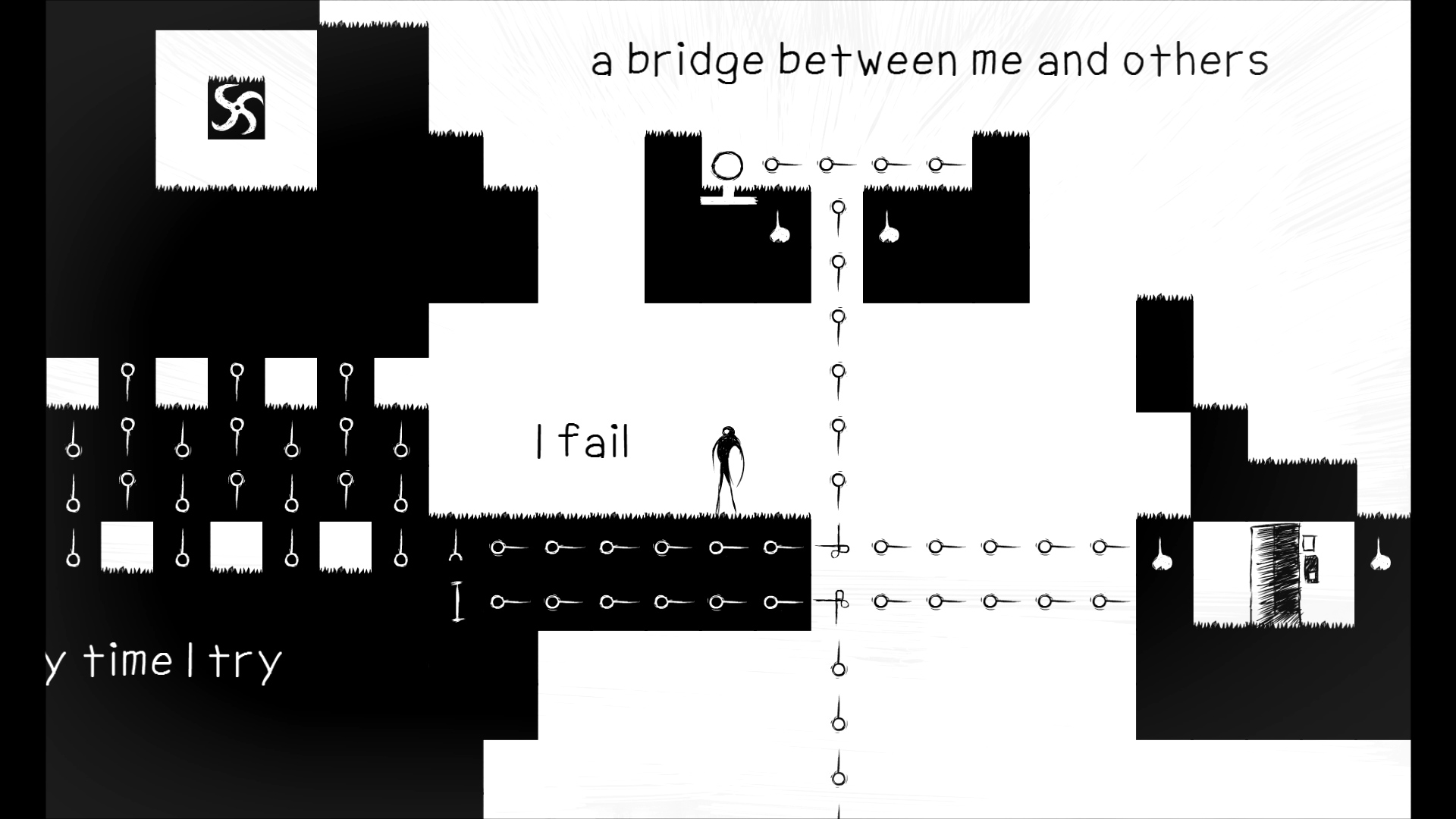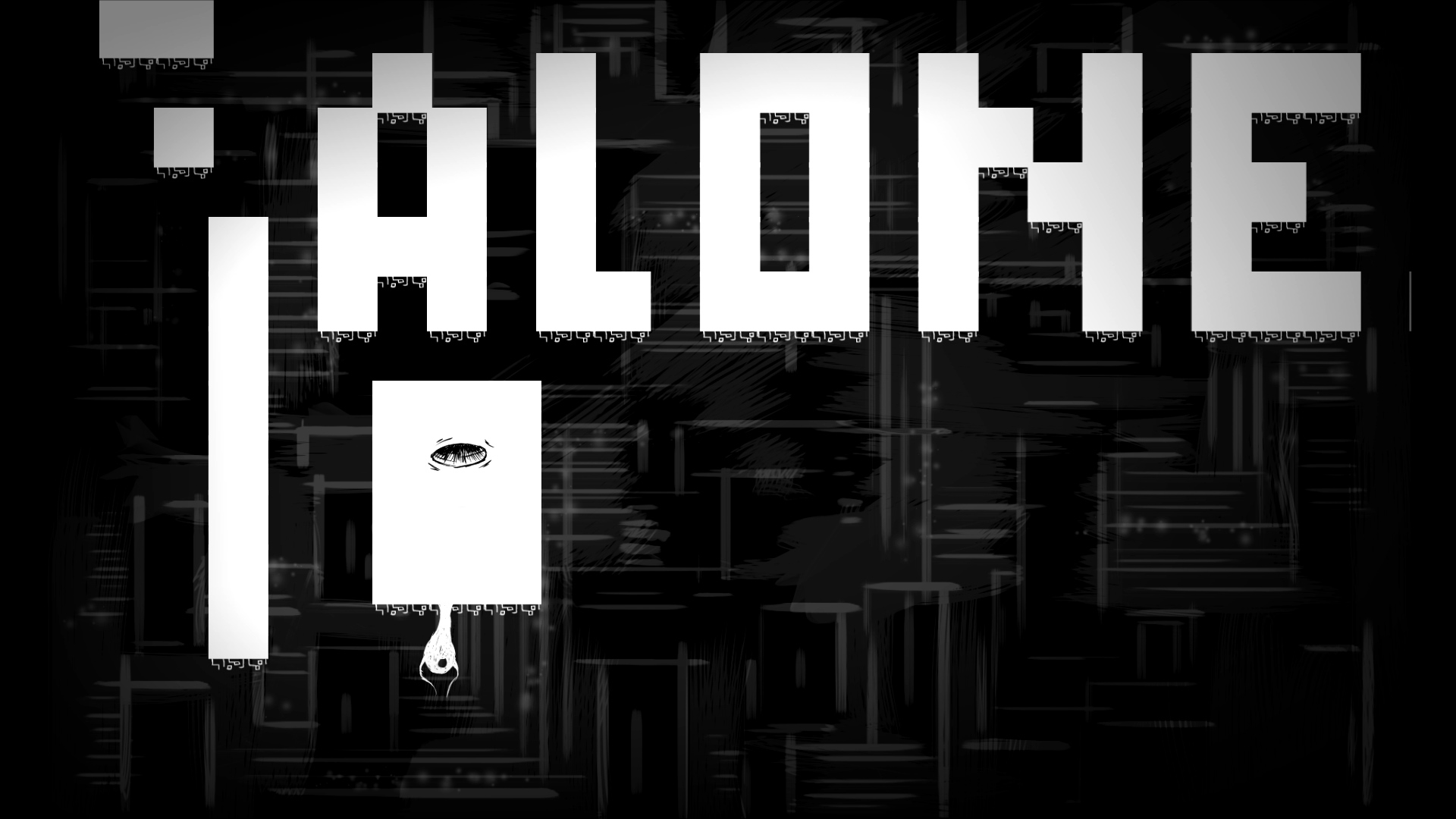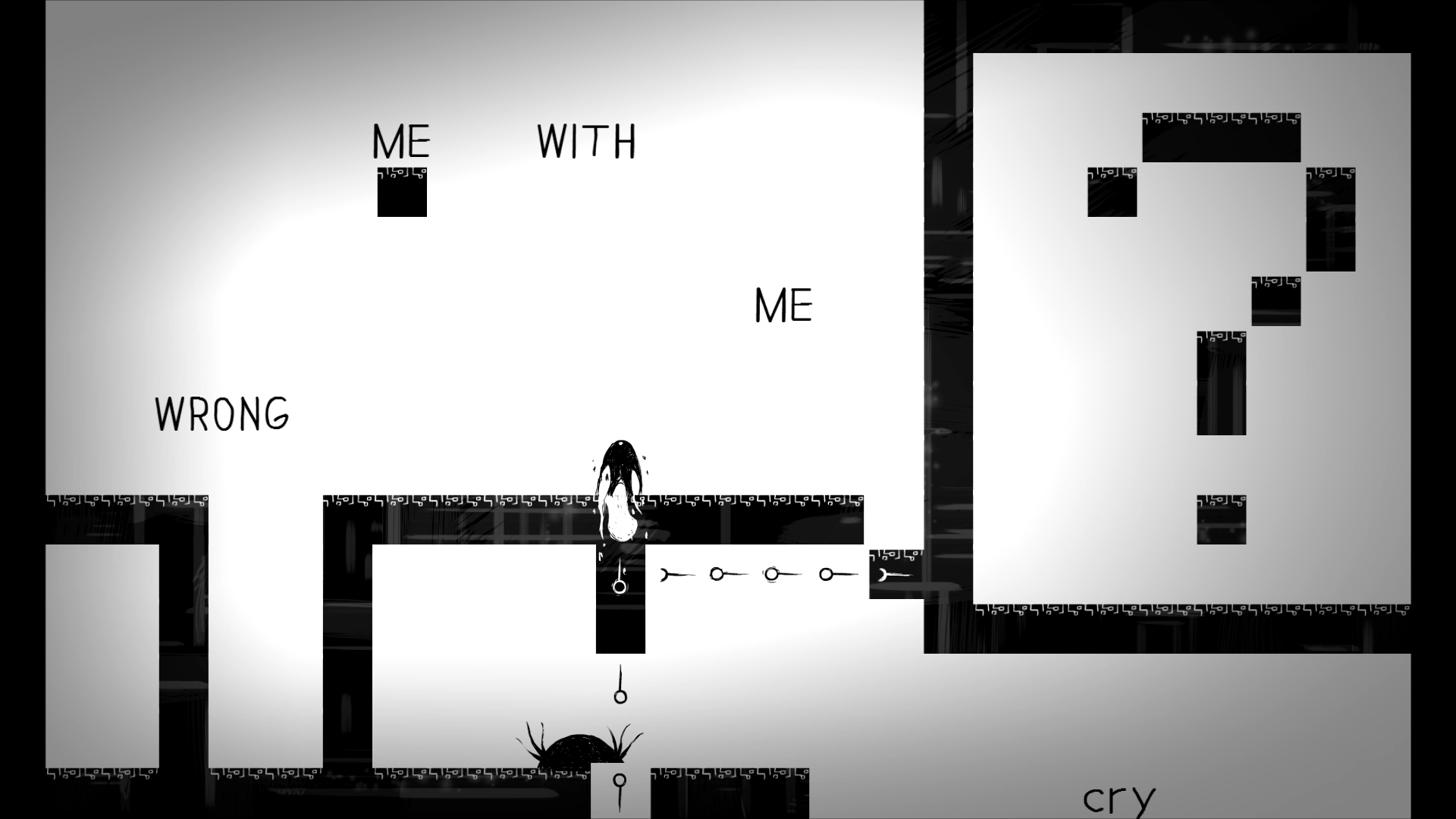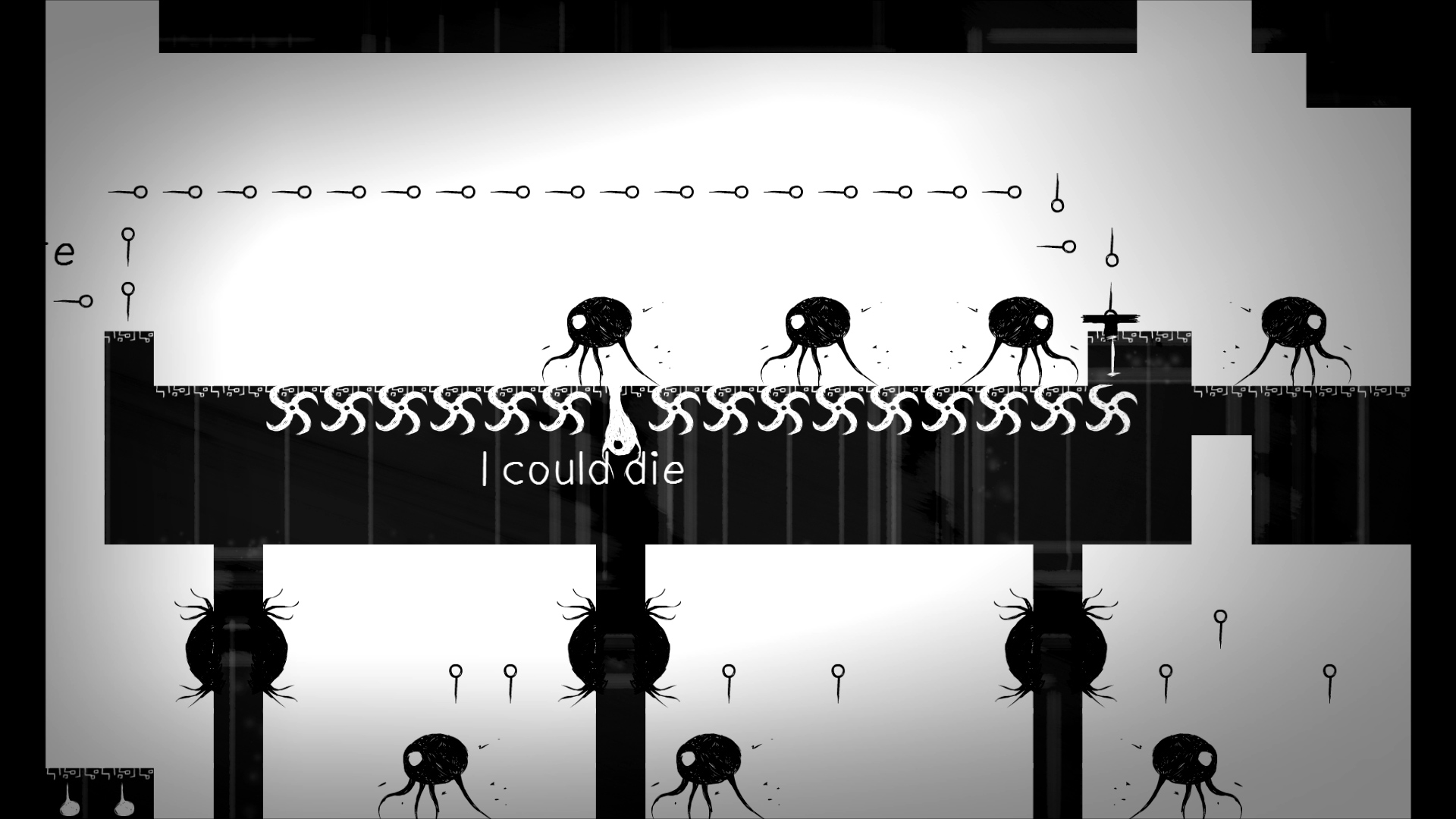
I’ve dealt with anxiety and depression for more than a decade. It’s led to many awkward situations where I ended up feeling worthless because I couldn’t handle pressure, a number of confrontations with people who simply couldn’t comprehend what I was going through, and days when I felt like it wasn’t worth going outside because of what may happen. I felt like I was broken. Only in the past few years have I come to terms with my problems in knowing that I’m not alone. More people who suffer from anxiety issues are realizing that what they have is not a social stigma. Society is developing a greater sympathy, and so in turn is the media. Sym, the debut title from Atrax Games, is one of the very few games on the market that is trying to promote a better understanding of social anxiety issues, and it does so admirably.
Sym puts players in control of Josh, a teenager with a social anxiety disorder who perceives the world through two alter-egos. The shadow-like Caleb is his avatar for reality, perceiving it to be filled with numerous threats. Massive eyes are always watching him, and he treads carefully out of fear that he’ll be devoured by some horrible creature. When the pressures of the real world become too much Josh retreats into his own mind, cocooning himself in the form of the white shade Ammiel in a world of shadows where he believes himself protected from the hazards of his daily life. Yet not even this inner state is completely safe. The more Josh seeks escape through Ammiel, the more he risks becoming forever lost in self-imposed solitude.
I’ll admit that after first finishing the game I felt that it hadn’t delivered its message very effectively. The cutscenes present after completing the early stages were fairly vague and the images they presented, such Josh being eaten by a monster, could have been a metaphor for any number of psychological issues. Perhaps this was to help other players connect to the subject more by suggesting how problems they may have dealt with in the past feel similar, but a bit more specificity would have been more appropriate.
It also didn’t help that much of Josh’s mental state is conveyed through text scattered about each stage bearing messages like “I want to change, but I can’t” and “I don’t want to talk at all. Please don’t stare” in the light world, or “I like my own little world. … Nothing can hurt me” in the shadow world. I felt that the game was falling into the trap so many artistic platformers do by using non-contextual dialogue and imagery to simply tell players what they should feel without representing it through the mechanics of the game.

It wasn’t until I thought about the latter half again when it made better sense to me. Some of the levels were very blunt about what they were representing – one level where the player has to jump up ledges as the walls are rapidly closing in on them, one which requires constantly moving forward on shifting blocks or risk falling and starting another long trek upwards, and one where the only safe path can be found by hitting switches that correspond to math problems (I assume this is to represent the anxiety felt when taking a test).
More than that was how the number of obstacles and traps became greater in the majority of the last few levels, and then it hit me. Most of the hazards can only be dodged by shifting into the shadow world, or shutting out reality. It symbolizes avoidance, the problem of constantly trying to escape the real world instead of confronting problems and growing from them. It’s a defense mechanism I’ve used many times before to try and forget about my problems; as soon as I made the connection, the game suddenly had a much greater impact.

The final stage allows players to determine Josh’s ultimate fate by offering two different routes to take. The first, which leads to completing the game as Ammiel, requires players to avoid the traps encountered before as well as other silhouette-like figures that will rip the white shadow up from the ground. Successfully dodging them results in Josh shutting himself away in his own world. The other path implies that through Caleb, Josh has overcome his fears. He must rescue others trapped in the shadow world before he can be free, and after doing so, walks out into the light to join his friends. On the first playthrough, though, there’s no way to tell which path leads to which outcome, which I felt was a clever touch. Whenever anyone with a mental disorder tries to cope with it, there’s always a risk of failure or regression, even if that person thinks they’re taking the right course of action. Even so, they have to be willing to try again to get a better result, and therefore a better life.
Sym makes good use of its dual-world concept to provide some creative puzzle platforming. As Caleb players can only walk on black tiles and are vulnerable to the most hazards. When switching to Ammiel everything is inverted and the white tiles change from negative space to solid surfaces. There are fewer traps in the shadow world, but gravity is also shifted and there’s a risk of falling upwards into oblivion if the player misses a jump. A majority of levels require hitting switches to change black tiles to white or vice-versa to create a path that can only be travelled across in the opposite world.

Each successive set of levels introduces a new feature or danger to overcome: spinning blades that can kill Ammiel, plants that devour Caleb if he walks over a tile that holds their bulb, “octo-dogs” that eat Caleb if they get too close, and rows of tiles that shift between solid and empty space (either following a set pattern or changing whenever the player switches worlds). The levels in which they’re introduced provide a chance to get accustomed to them individually before combining them with other obstacles for even greater challenges late in the game. There are segments which require careful timing and maneuverability, frequently shifting between the light and dark world to dodge meandering octo-dogs in the former while clearing rows of blades in the latter. Or a player may have to switch to the shadow world to trigger the appearance of white tiles, jump on the underside as the sequence moves forward, then shift back to the normal world and move through the gap created to reach the exit.
While Sym becomes quite difficult in its later sections it provides a fair challenge for the most part. It controls very well with ease in adjusting momentum and trajectory when jumping. There are some stages that require a bit of trial and error to get the feel for how things flow, like the pattern of shifting tiles. While this does get annoying in the lengthier levels it’s not a problem unique to this game alone, and it isn’t that difficult to figure out the correct sequence after a few attempts.
What I can’t forgive, however, are the levels with a section that require players to choose one of several narrow shafts to jump down, and more often than not at least one of these will result in instant death from landing on a tile that holds a man-eating plant bud. They’re unbelievably cheap deaths since the camera can’t pan down to reveal the bottom of the shaft and if it’s safe or not, and even if there’s a bud most of the time this happens it’s impossible to try and avoid it because there’s no room to maneuver out of the way before landing. I really don’t know why these were added; if it’s to further the metaphor of the frustration that anxiety disorders can lead to by making people feel like failures then it could have been executed in a much less annoying way.

I commend Atrax for what they’ve done with Sym. The game succeeds both as an engaging if occasionally frustrating platformer and as a vehicle for helping players empathize with those struggling from anxiety disorders. Not everyone may find the message is conveyed effectively; as I said, it took me a few hours after I’d completed it before everything clicked, but overall I think they did well. It’s certainly a better example of conveying mental distress through gameplay than The Old City ever achieved. I’d like to think Sym is another positive example that shows gaming is moving forward in its willingness to discuss tougher issues, and I hope to see more titles take a cue from it in the future.



